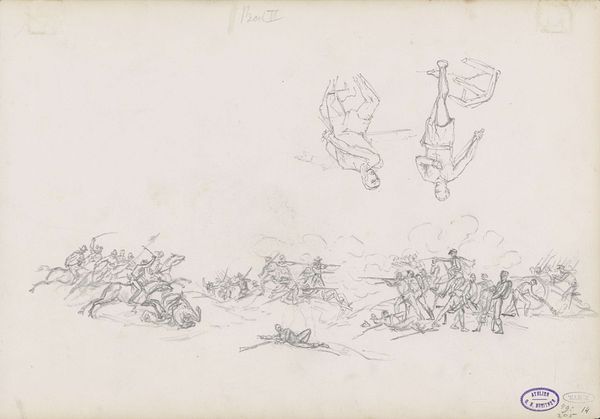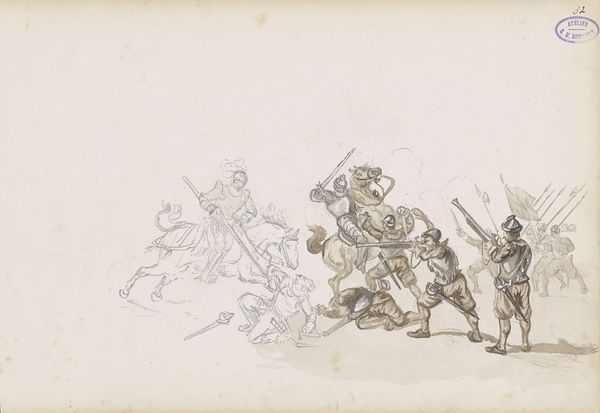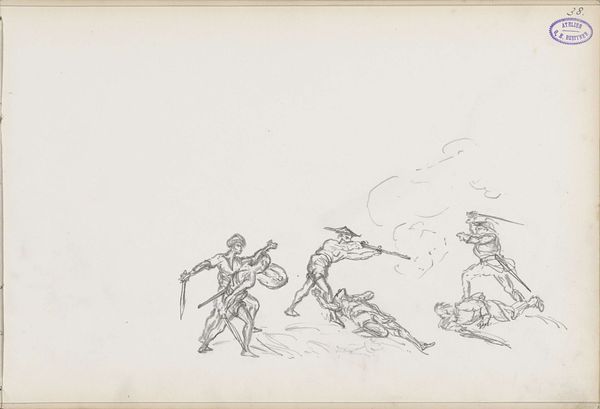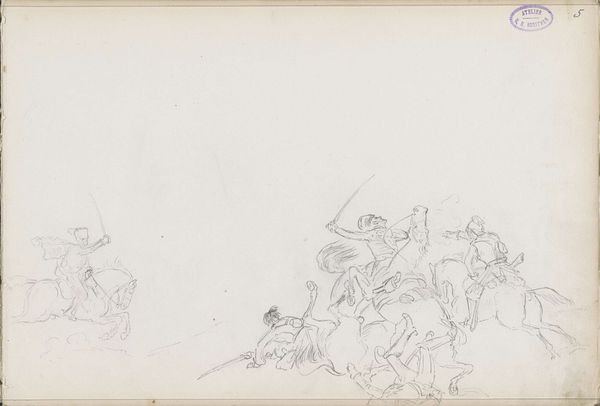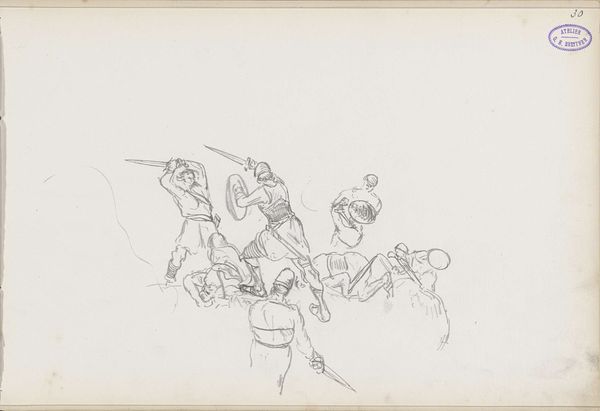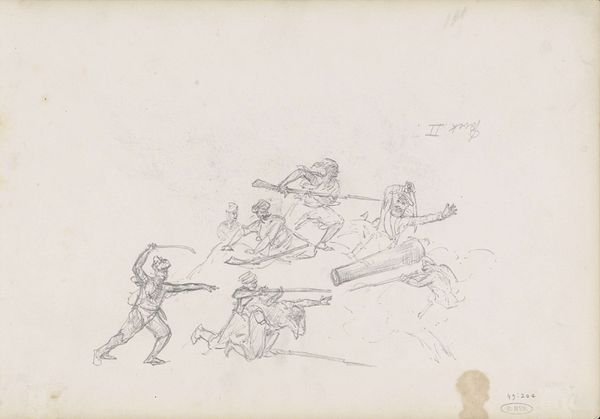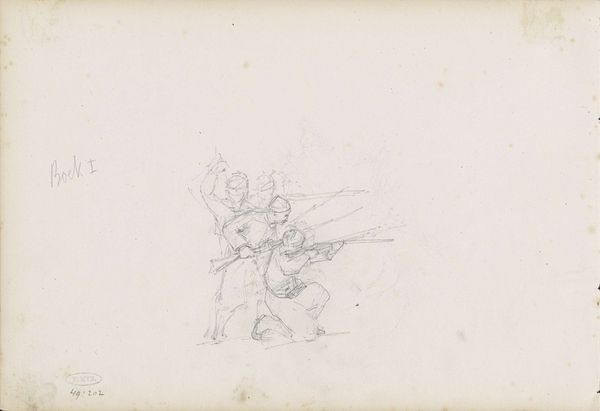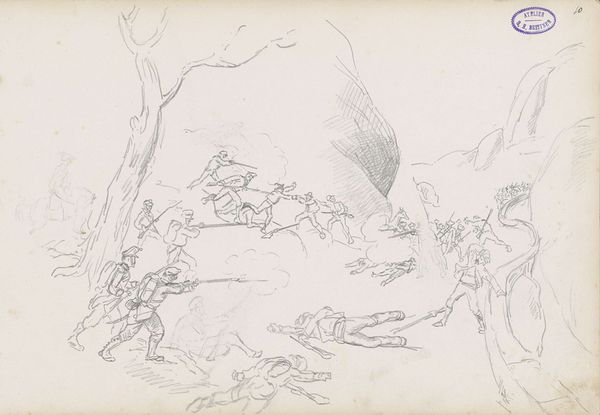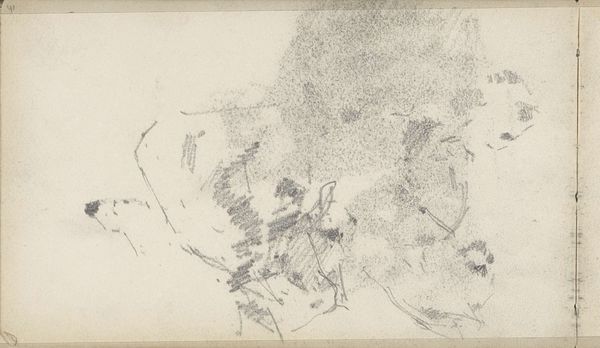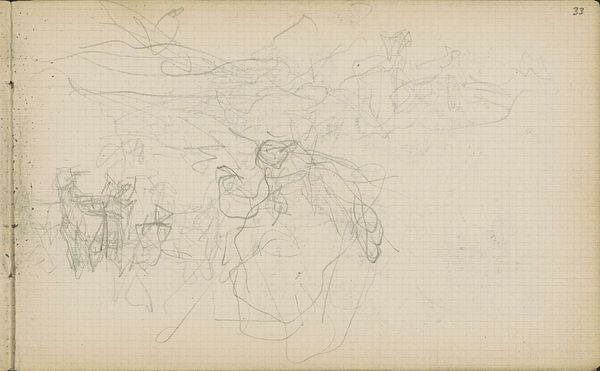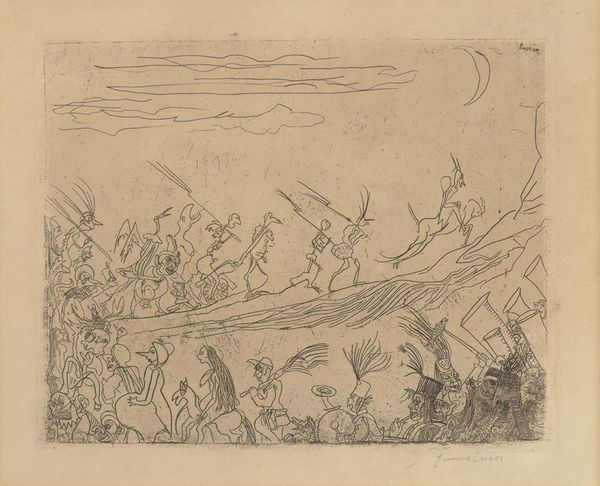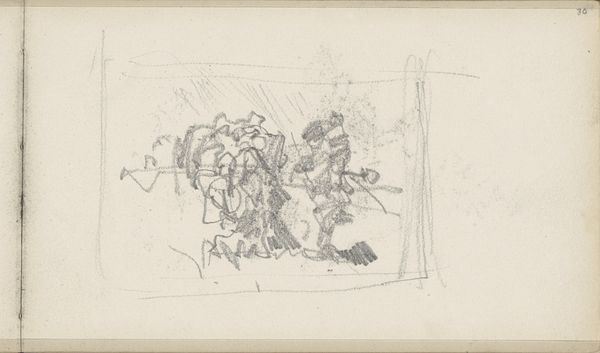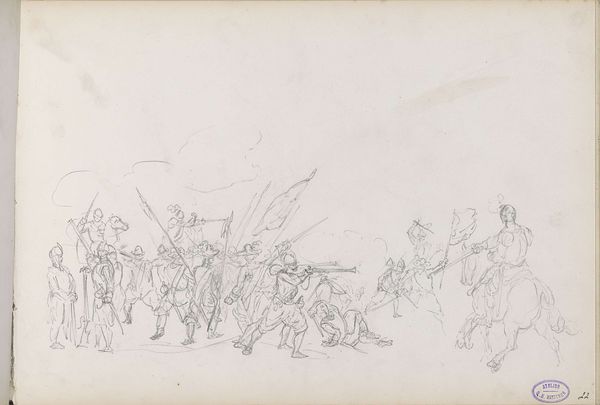
drawing, pencil
#
drawing
#
narrative-art
#
figuration
#
pencil
#
genre-painting
#
realism
Dimensions: height 243 mm, width 348 mm
Copyright: Rijks Museum: Open Domain
Editor: This is George Hendrik Breitner’s “Wild Boar Hunt and Two Drunks,” a pencil drawing from 1873. It has a whimsical, almost satirical feel, with a frenzied boar hunt on one side and two somewhat out-of-place revelers on the other. What do you see in this piece, beyond the literal depiction? Curator: I see a critique of class and leisure. The hunt, traditionally a pastime of the aristocracy, is juxtaposed with the apparent drunken revelry of figures who, based on their attire, seem to represent a different social stratum. What does it mean to portray both activities, each a form of leisure, within the same frame, particularly under the gaze of that almost mocking sun? Editor: That's an interesting point – almost like contrasting forms of escape, or even commenting on excess. I hadn't thought of it in terms of social critique. Curator: Breitner often used his art to observe and, at times, subtly challenge the social norms of his time. Consider the composition – the chaotic energy of the hunt versus the seemingly carefree abandon of the drunkards. Is he suggesting a moral equivalence, or perhaps highlighting the inherent absurdity in both pursuits? And consider the sun, which bears an uncanny resemblance to depictions of caricatures during this era that are thought to depict society’s elite as bloated, lazy, or disconnected from any actual productivity? Editor: So you see the sun as almost a critical observer, adding another layer to the social commentary? I was focused on the figures and missed the other nuances. Curator: Exactly. Art doesn’t exist in a vacuum; Breitner, as a realist, was reflecting the world around him, with all its inherent inequalities and contradictions. I wonder about our emotional response - which scene feels more transgressive, and why? Editor: Now that I think of it that way, I have a lot to think about. Thanks, I now look at the image quite differently, and really appreciate how art embodies and influences societal power structures. Curator: Indeed. By analyzing art through these lenses, we gain a deeper understanding of its cultural impact.
Comments
No comments
Be the first to comment and join the conversation on the ultimate creative platform.
